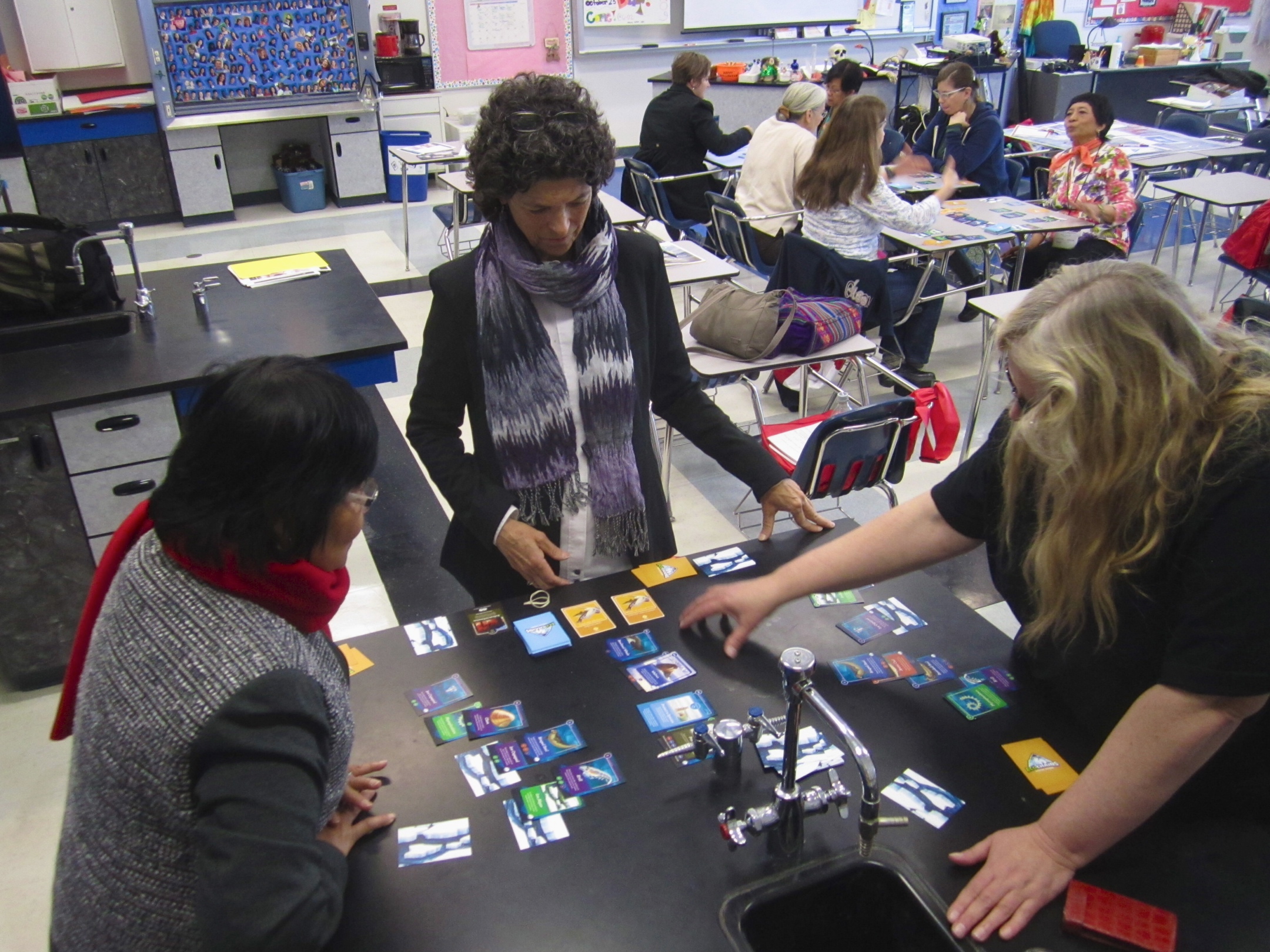PoLAR Heads to Alaska!

From declining sea ice to thawing permafrost to stronger coastal storms, Alaska is at the forefront of polar climate change. Recognizing the importance of addressing this challenging topic within education, organizers for the biennial Alaska Math and Science Conference (AMSC) chose “Changing Climates: Tracking Trends” as the theme for the 2013 meeting.
PoLAR Partners Elena Sparrow, Margie Turrin, Malinda Chase, Jessica Brunacini, and Kelsey Gobroski attended AMSC, held October 18-20 in Anchorage, AK. The PoLAR Partnership hosted four sessions during the conference focused on opportunities for professional development and the use of innovative tools for climate change education. Teachers who participated in the sessions were excited to learn about and interact with PoLAR resources, including SMARTIC, Polar Explorer, EcoChains, and AMNH’s online professional development course on climate change. Many teachers expressed a strong interest in using the PoLAR tools in their classrooms. They also provided valuable feedback as to what could increase the use of the resources throughout Alaska, for example highlighting Native Alaskan values and providing tips on adapting tools to different environments and ecosystems.
In addition to hosting sessions, PoLAR team members participated in a number of sessions led by other organizations, including the National Park Service, PolarTREC, and the Alaska Center for Ocean Science Education Excellence, to learn more about the wide variety of climate change education resources and programming available to Alaskan teachers. Kelsey Gobroski also collected interviews and audio from the conference for the Polar Voices project.
Following the conference, Margie Turrin and Jessica Brunacini drove down to Seward to visit the Alaska SeaLife Center and discuss potential collaborations. Along the way, they stopped at the Alaska Wildlife Conservation Center, where they were able to see caribou, moose, and wood bison. The last stop on their adventure was the Exit Glacier in Kenai Fjords National Park, which is closely monitored by park officials due to the rate at which it is retreating. They were impressed to see an informational sign from the National Park Service explaining the links between climate change and glacial retreat to park visitors - a fitting note on which to end the trip.